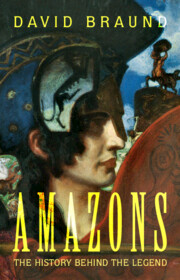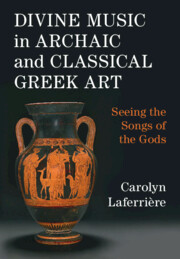Refine search
Actions for selected content:
38 results
4 - Potnia of the Labyrinth, Initiation of the King, and the Triple Sacrifice
-
- Book:
- Myth, Ritual, and Society in Mycenaean Anatolia
- Published online:
- 18 July 2025
- Print publication:
- 07 August 2025, pp 131-161
-
- Chapter
- Export citation
2 - Mycenaean and Vedic Sacrificial Posts
-
- Book:
- Myth, Ritual, and Society in Mycenaean Anatolia
- Published online:
- 18 July 2025
- Print publication:
- 07 August 2025, pp 47-66
-
- Chapter
- Export citation
6 - Nart Saga, Indo-Iranian Twins, and Dioscurias
-
- Book:
- Myth, Ritual, and Society in Mycenaean Anatolia
- Published online:
- 18 July 2025
- Print publication:
- 07 August 2025, pp 194-237
-
- Chapter
- Export citation
7 - Golden Fleeces
-
- Book:
- Myth, Ritual, and Society in Mycenaean Anatolia
- Published online:
- 18 July 2025
- Print publication:
- 07 August 2025, pp 238-272
-
- Chapter
- Export citation
5 - Mitannian and Anatolian Triads
-
- Book:
- Myth, Ritual, and Society in Mycenaean Anatolia
- Published online:
- 18 July 2025
- Print publication:
- 07 August 2025, pp 162-193
-
- Chapter
- Export citation
1 - A Mycenaean Ritual and Its Cult Language
-
- Book:
- Myth, Ritual, and Society in Mycenaean Anatolia
- Published online:
- 18 July 2025
- Print publication:
- 07 August 2025, pp 8-46
-
- Chapter
- Export citation
3 - Mycenaean Leaders in the Context of Indo-European and Indo-Iranian Society and Ritual
-
- Book:
- Myth, Ritual, and Society in Mycenaean Anatolia
- Published online:
- 18 July 2025
- Print publication:
- 07 August 2025, pp 67-130
-
- Chapter
- Export citation

Amazons
- The History Behind the Legend
-
- Published online:
- 26 March 2025
- Print publication:
- 24 April 2025
Chapter 5 - Romani patria Callimachi
-
- Book:
- Propertius and the Virgilian Sensibility
- Published online:
- 28 November 2024
- Print publication:
- 05 December 2024, pp 260-327
-
- Chapter
- Export citation
10 - Boeotian Foundation Mûthoi: From Dioscuri to Cabiri
- from Part II - Aeolian Origins in Myth
-
- Book:
- Aeolic and Aeolians
- Published online:
- 21 November 2024
- Print publication:
- 21 November 2024, pp 277-314
-
- Chapter
- Export citation
9 - Metapontium: Night and Day; Black and White
- from Part II - Aeolian Origins in Myth
-
- Book:
- Aeolic and Aeolians
- Published online:
- 21 November 2024
- Print publication:
- 21 November 2024, pp 236-276
-
- Chapter
- Export citation
17 - Conclusion
- from Part III - Anatolian and Aeolian Myth and Cult
-
- Book:
- Aeolic and Aeolians
- Published online:
- 21 November 2024
- Print publication:
- 21 November 2024, pp 519-552
-
- Chapter
- Export citation
4 - Mycenaean Dialects and Despótēs
- from Part I - Aeolian and Aeolic
-
- Book:
- Aeolic and Aeolians
- Published online:
- 21 November 2024
- Print publication:
- 21 November 2024, pp 69-87
-
- Chapter
- Export citation
14 - Parnassian Divining Bee Nymphs and Lot-Divination
- from Part III - Anatolian and Aeolian Myth and Cult
-
- Book:
- Aeolic and Aeolians
- Published online:
- 21 November 2024
- Print publication:
- 21 November 2024, pp 410-449
-
- Chapter
- Export citation
Three - Painting with Music
-
- Book:
- Divine Music in Archaic and Classical Greek Art
- Published online:
- 01 February 2024
- Print publication:
- 29 February 2024, pp 115-157
-
- Chapter
- Export citation
Two - Pouring Performances
-
- Book:
- Divine Music in Archaic and Classical Greek Art
- Published online:
- 01 February 2024
- Print publication:
- 29 February 2024, pp 72-114
-
- Chapter
- Export citation

Divine Music in Archaic and Classical Greek Art
- Seeing the Songs of the Gods
-
- Published online:
- 01 February 2024
- Print publication:
- 29 February 2024
NEW LIGHT IN CHRISTODORUS: AN ACROSTIC AT ANTH. PAL. 2.72–6
-
- Journal:
- The Classical Quarterly / Volume 73 / Issue 2 / December 2023
- Published online by Cambridge University Press:
- 01 March 2024, pp. 965-969
- Print publication:
- December 2023
-
- Article
-
- You have access
- Open access
- HTML
- Export citation
Chapter 10 - ‘For Thy Kingdom Is Past Not Away, / Nor Thy Power from the Place Thereof Hurled’
- from Part III - Divine Transcendence and Pragmatic Purposes
-
-
- Book:
- Divination and Revelation in Later Antiquity
- Published online:
- 19 October 2023
- Print publication:
- 02 November 2023, pp 191-207
-
- Chapter
- Export citation
Chapter 5 - Ovid Metamorphoses
-
- Book:
- The Stories of Similes in Greek and Roman Epic
- Published online:
- 06 July 2023
- Print publication:
- 20 July 2023, pp 215-253
-
- Chapter
- Export citation
